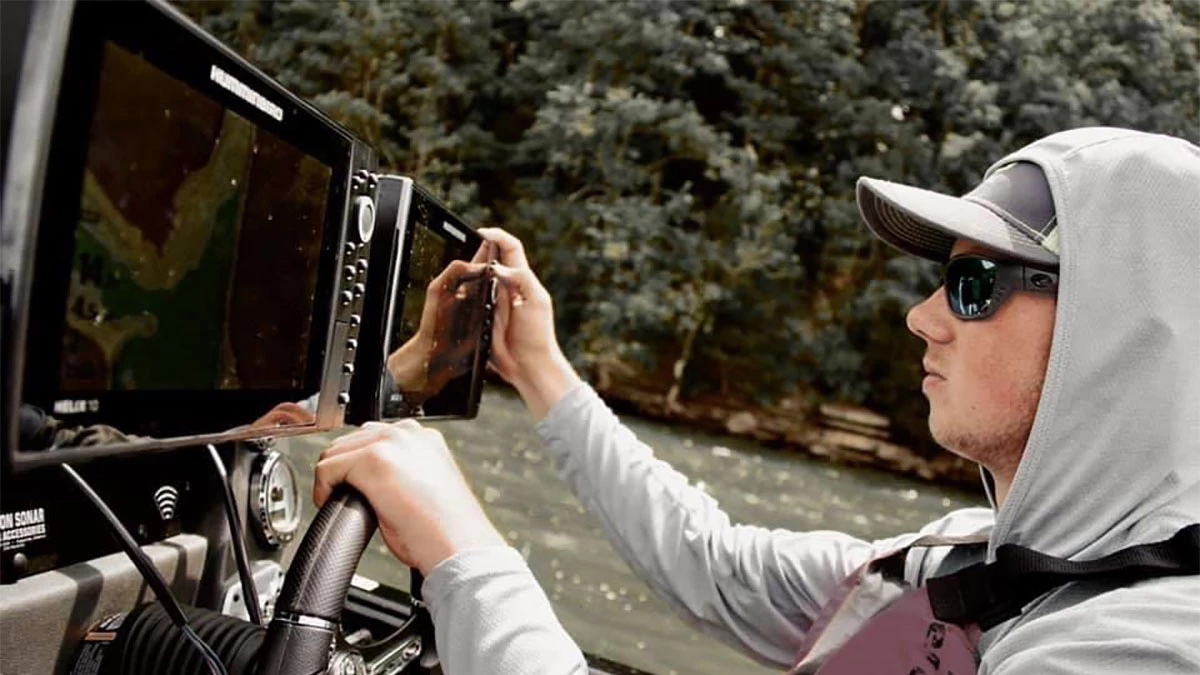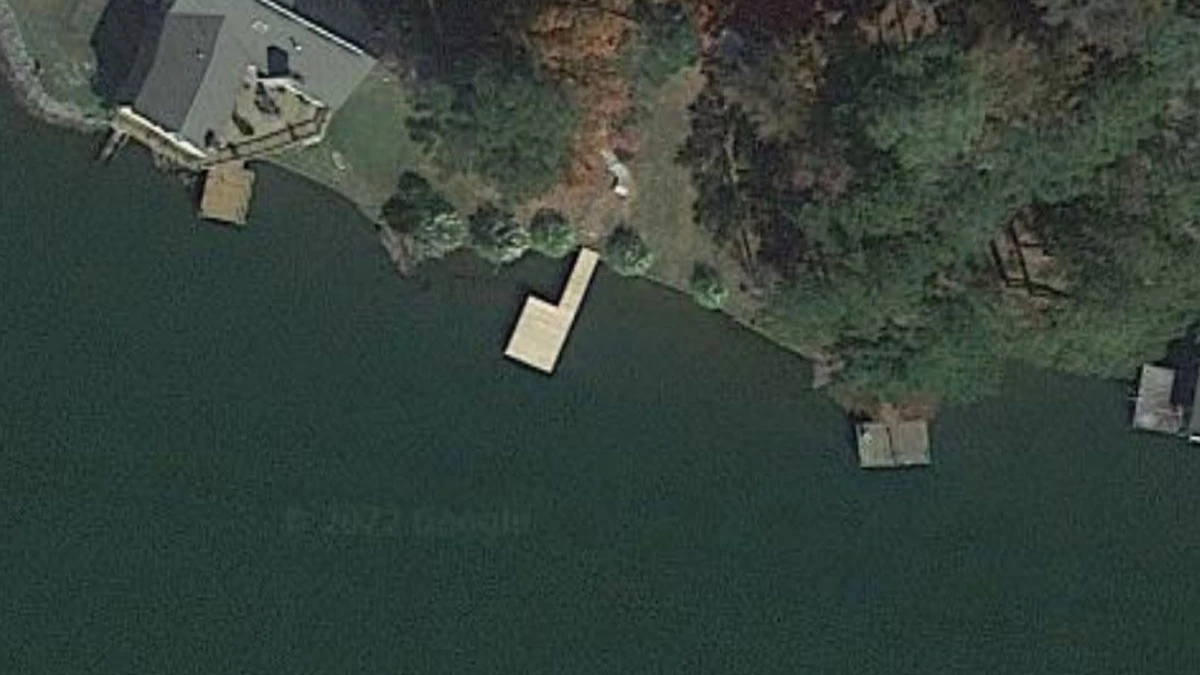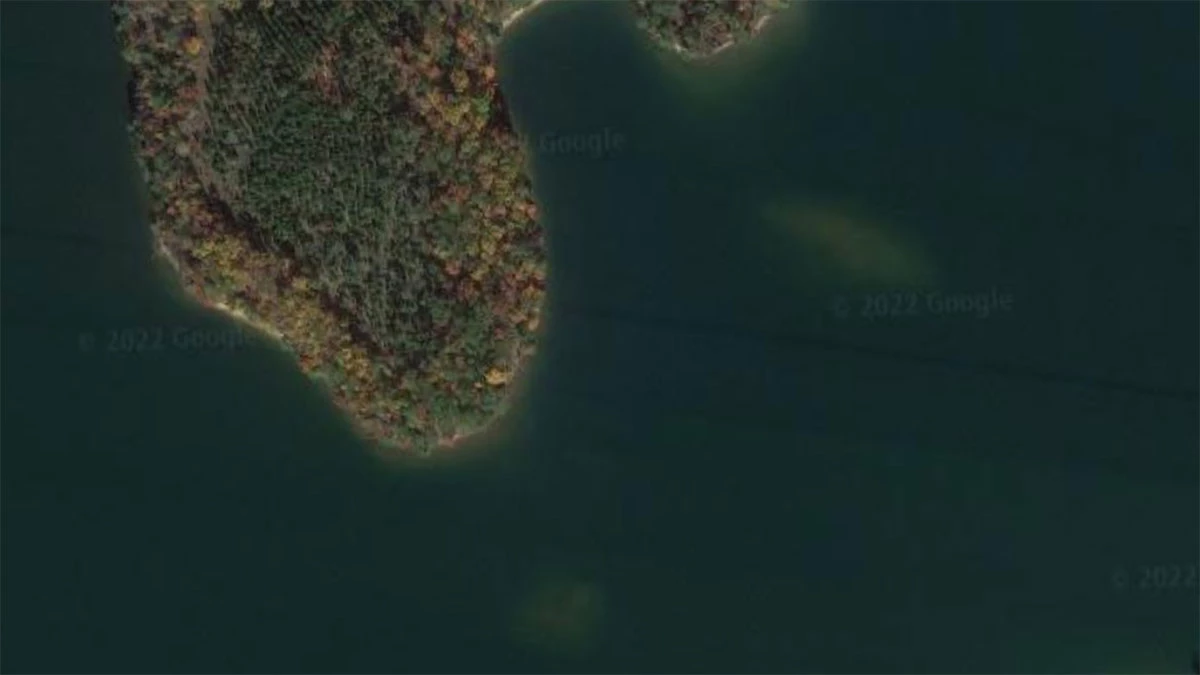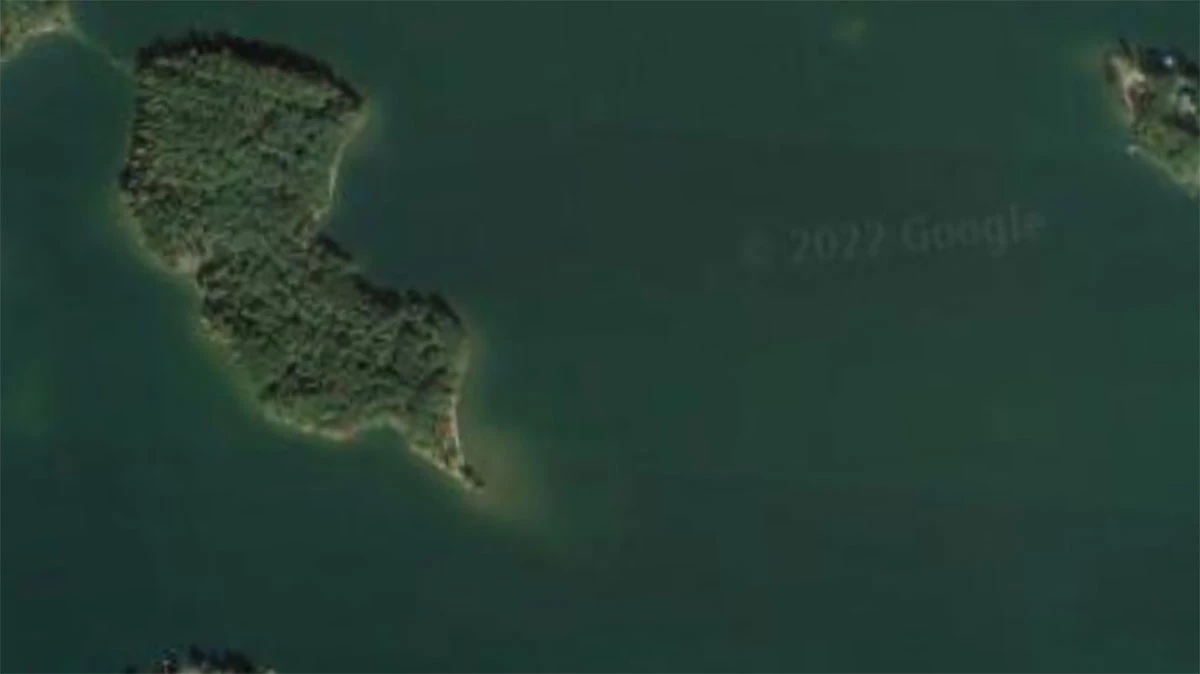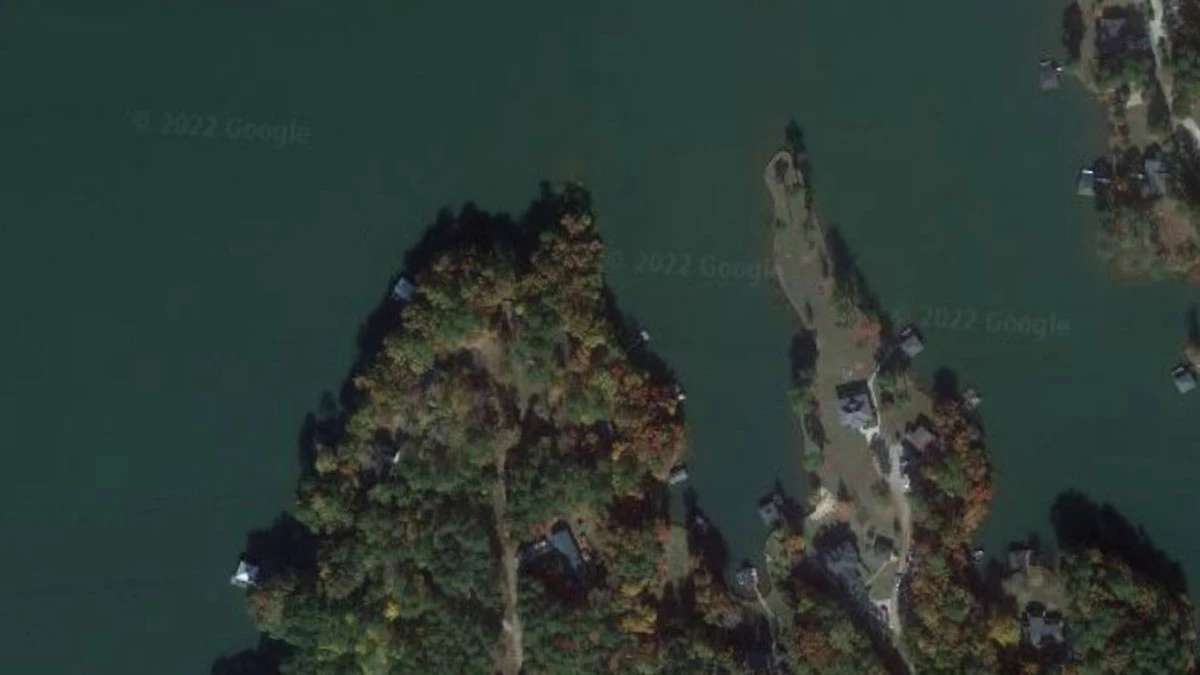This is a really weird time of year, if we’re all being honest with each other. Some days it’s warm and the wind hardly blows and other days it’s freezing cold with a stiff, spine-numbing wind. The transition from fall to winter is never easy on the bass angler and for the past few weeks, our whole staff has been pretty frustrated by it. It’s tough to go out and create great content when the bass won’t cooperate. From Georgia all the way to Minnesota, it has been a pretty frustrating endeavor for all of us.
There are a few fishing patterns, however, that will help you keep catching fish during this awkward transition period. I know it’s tempting to hop in a deer stand or a duck blind right now, but if you want to keep catching bass, stay with me for a few minutes and we’ll make that possible.
The next time you go fishing during the fall-to-winter transition, make a concerted effort to find areas similar to these. You can get right in a hurry when other folks are struggling to get bites.
Hit the tiny pieces of cover between docks, even if it looks like nothing
As bass anglers, it seems like we’re all dead-set on fishing boat docks throughout the entire year. I’m sure that’s not the case in every lake but for the large majority of folks, these boat docks are low-hanging fruit that normally hold a bunch of bass. While I’m not discouraging you from fishing these docks, I’m also encouraging you to fish the bank between these docks. This is very important throughout this time of year.
If you really think about it, these boat docks have been fished to death for the last several months because, again, they’re easy targets. This means that the resident bass that may live around these docks have been hammered by jigs, Texas rigs and shaky heads for months and they’ve become incredibly spooky and wise to our offerings. This is when they’ll often shift to nearby seawalls and position on incredibly small pieces of cover.
I was talking to my buddy and colleague Terry Brown about this earlier this week. He lives and fishes in Illinois and I’m in Georgia but we’ve noticed the exact same thing. A bass only needs one eye in the shade to feel protected, so while huge laydowns might seem appealing to the angler, that’s not always necessary for the bass.
If you’re fishing down a bank and see a twig the size of a toothbrush hanging over the bank and potentially creating a tiny bit of shade, you better pick up a lightweight jig and pitch to it. More times than not, there’s a solid-sized bass sitting under that little twig ready to attack nearby prey. Because that little bit of shade the twig provides the bass, that ol’ bass thinks it’s being slick and can’t be bothered or threatened; the bank covers its backside from potential predators and the silly twig gives it all the confidence in the world to attack anything that might swim by.
So when you see a crappy-looking twig hanging into the water this time of year near the mouth of a pocket, pitch a jig to it. If there’s a nice bass hanging out, they’ll bite it when it hits the dang water.
Keep an eye out for humps and/or shoal markers
This is something that, in my opinion, is incredibly overlooked in the bass-fishing community. I grew up learning to fish on Lake Lanier and I remember seeing shoal markers everywhere; big ol’ poles sticking out of shallow humps to tell boaters to stay away. As a kid, I always figured there weren’t many bass around these abrupt depth changes because they just seemed too obvious. Everyone fished them, right? So why would Dad and I bother messing with ‘em?
Long story short, I learned that I was completely wrong over the years. Several decades of experience since then have taught me that these ragged-looking poles can alert you to some of the best bass fishing during the fall-to-winter transition. As the bass leave the creeks with full bellies of baitfish, they love to use these shoals as stopping points on their journeys back to their deep-water haunts for the winter.
I was on the water several years ago—almost this same week—on a lake trying to get photos with some anglers for different promotional projects and what not. We couldn’t get bit and it was frustrating for all of us. As I was sitting in the bottom of the boat, with my camera strapped around my neck, I noticed a big shoal marker and a noticeable shallow spot underneath it. I don’t like to be bossy in the boat and I don’t fish in these situations because I need to be on the camera ready to work, but I finally broke my silence and said, “Please go to that windblown shoal marker and throw a jerkbait on the down-wind side.”
The anglers did and within three casts, they caught three spotted bass weighing more than 3 pounds a piece. We got our photos done and everything was awesome. I say that to prove the point that even though these places look obvious, hardly anyone ever fishes ‘em. So never overlook them when you’re running down the lake. This time of year especially, they’re always worth a few casts.
Clay points with a finesse crankbait can be money
Much like the aforementioned shoals, clay points are a great option during this awkward transition phase. They don’t look like much to the naked eye and it’s tough to pull up to ‘em with a bunch of confidence, but once you start getting a bunch of bites throughout the lake using this pattern, you’ll quickly become a believer.
As the temperatures drop this time of year, bass are looking for just about anything that holds more heat than the rest of their surroundings. This can mean metal seawalls, riprap, floating docks with black-colored floats and, in this case, clay banks. Again, they might not look especially appealing but I’m telling you—you have to give it a shot.
Flat-sided crankbaits tend to be a solid choice for this situation, followed closely by a medium-diving jerkbait. If you catch one on this type of area, make sure you inspect the belly of the bass. If it’s covered in a clay or mud-type substance or looks a little red, that tells you that they’re most likely positioned like this throughout most of the lake. They’ll hug that bottom so tight in an effort to stay warm that it’ll actually temporarily dye their bellies.
So if you’re running around your home lake and can’t get a bite, make an effort to stop at any clay points you might find. This is an outstanding way to get right in a hurry.
Isolated main-lake cover, even if it looks like crap
This satellite screenshot represents a lot of heartbreak for me. For the local folks who want to try and find it and “steal” my fishing spot, by all means, go for it. But I decided to include it in this article to share a very specific point.
This silly fallen tree—well, it used to be a tree but now it’s a small log—played home to the biggest bass I have ever seen on public waters. I have caught a 13-pound bass on a private pond and while it was a pile of fun, I don’t really covet that accomplishment like I would if I were fishing a public lake. But I digress.
This nothing-looking log held a double-digit bass that just about made me pass out. I cast a buzzbait to it and as I was just about to pull the buzzbait out of the water to make a cast, a double-digit bass chased it from under that little log and tried to eat it at the foot of my trolling motor. With only a few feet of line out, I couldn’t really do much and the giant bass ended up coming free and swimming right back to the log in the photo.
Guess what? It happened at this exact time of year.
While I missed the bass, it confirmed what we’ve always taught here at Wired2fish; big bass love isolated cover and when you’re fishing a featureless bank, a single small, crappy-looking piece of cover can hold an absolute giant.
So if you’re struggling, run around the lake and look for anything on the bank by itself. Whether it’s a single dock, a laydown, a log or heck… a tied-up jetski floating in the water. Just fish it and see what happens. You’ll be pleasantly surprised.
It’s not always fun, but drag the guts with a Carolina rig
I feel like I can hear everyone groan as they read this subheading but I’d ask that you hear me out for just one more minute. I don’t like throwing the dang thing and honestly, I doubt many folks really care for it. But as much as we might not like it, you can’t really deny its ability to catch fish in tough conditions, especially during the fall-to-winter transition.
About six or seven years ago, it was late October and I was leaning against a boat trailer and talking to professional angler Mark Menendez after filming together all morning. I was about to make the 7-hour drive back home but right before I left, I started complaining about how tough the fall transition bite had been back home. After a long conversation he told me that I’d be crazy not to rig up a Carolina rig and drag it through the ditches at mouths of small pockets and creeks. He explained that as the bass are leaving the shallows heading towards the main lakes, they’ll often stop on small stumps in the “guts” of these small pockets and a Carolina rig is an outstanding way to catch ‘em.
I internally rolled my eyes and thanked him for the always-helpful information, hopped in my diesel and started rolling back home. During that drive, however, I really started considering what he told me. The next day, I hooked the boat up and spent the whole day doing what he suggested.
Sure enough, I caught the tar out of ‘em and while I didn’t catch any giants, I’d be willing to bet my best-five bass probably weighed 15 pounds or so. That’s not a crazy-big bag but heck, this time of year? I know a lot of folks around the country, including myself, who would kill for something like that. So if you’re struggling, keep this tactic in your back pocket and don’t be afraid to use it.
Again, this is a dang tough time for bass anglers but don’t let it get the best of you. The bass didn’t go anywhere; they didn’t jump the dam and swim somewhere else. They’re just in a funk and if you can keep a calm, clear head and perhaps try a few of these techniques, I think you’ll be in great shape to have an unforgettable month or so on the water.


